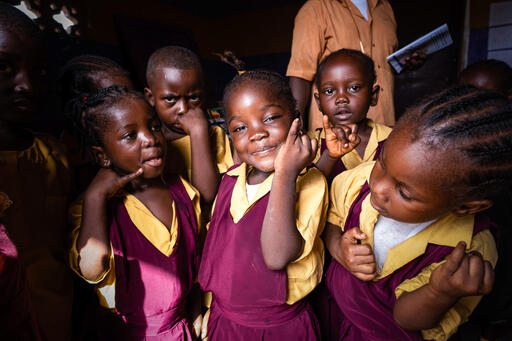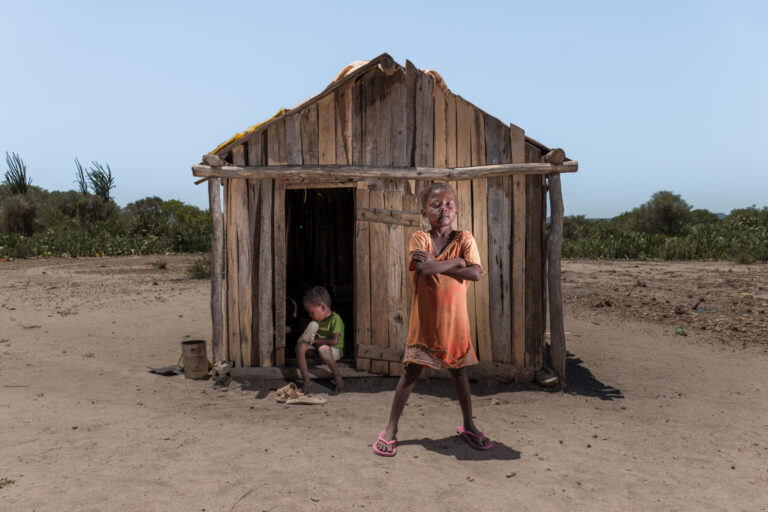[NAME CHANGED] Tobias, 13, stands by an open window at a shelter for sexually abused children in one of Colombia’s largest cities. He is one of six children from a very poor family. At the age of 9, Tobias was dressed ‘like a girl’ and sold to a man for sex by a male friend of his mother. After running away, he began to sell sex in order to survive, including dressing in women’s clothing in order to earn more money.
Sexual exploitation is a shocking and grave violation of children’s rights. Nevertheless, it too often goes unrecognized or unseen. And while a good deal of attention has been paid to the sexual exploitation of girls (in the literature and by the international community), significantly less investment has been devoted to boys, who often suffer in silence. [1] As a result, the needs, experiences and perspectives of boys, as well as youth who identify outside the male-female binary, have been neglected. The imperative to invest in robust and ethically sound research on this topic could not be more urgent, especially in light of the current coronavirus pandemic.
Increased risks of sexual violence and COVID-19
Evidence on the impact of the global response to the COVID-19 pandemic on sexual violence against children, including sexual exploitation, remains conjectural at best. Research on past outbreaks, however, suggests that in times of crisis and social upheaval, the added economic burden placed on many families and caregivers can make children more vulnerable to victimization. In Sierra Leone, for example, one study on the 2014-2015 Ebola epidemic found that vulnerable girls, including those who had lost relatives to the disease, turned to transactional sex to pay for food.[2] Other research also supports this notion, citing poverty as one predictor of children’s increased risk of violence following emergencies such as conflicts and natural disasters.[3]
School closures and loss of parental care may also lead to sexual exploitation and abuse. An increased online presence as a result of COVID-19 school closings and reduced adult supervision could inadvertently expose children to sexual predators. What’s more, many of the mitigating measures adopted by countries to address the pandemic have resulted in disruptions to the reporting and referral mechanisms of child protection services, leaving many children and families vulnerable. Moreover, measures to contain the virus have affected delivery of vital support and treatment services. Adapting child protection and violence prevention and support services rapidly and ethically, while ensuring the safety of all involved, is of paramount importance in responding to the current crisis.
We are at the very early stages of understanding how the coronavirus pandemic and similar public health crises affect child sexual exploitation. Perhaps most significantly, we lack documented good practices on how best to prevent and respond to sexual abuse during an outbreak.
Such gaps are compounded by deficits in statistical evidence on sexual exploitation more generally. Only a handful of countries have collected data on child sexual exploitation at regular intervals. As a result, it will be difficult to track changes in levels resulting from COVID-19, since most countries do not even have a reliable baseline. However, what is known about risk factors for sexual exploitation may suggest how outbreaks can exacerbate key determinants. A new UNICEF publication, Research on the Sexual Exploitation of Boys: Findings, ethical considerations and methodological challenges, documents what is known about the magnitude, risk factors and consequences of the sexual exploitation of boys, thus providing insights on the potentially far-reaching consequences of the current pandemic. The publication also discusses ethical and methodological challenges encountered when researching this topic – due to the extreme sensitivity of the subject matter – and ways to overcome them. This information can be vital in directing where investments are needed to develop guidelines for future research.
Documenting prevalence and risk factors
Global prevalence rates on the sexual exploitation of boys are unknown for a host of reasons, including underreporting, definitional ambiguities and inconsistencies, misconceptions and social stigma. Much of the research that has been conducted focuses on Europe, North America and Southeast Asia. Evidence from Western countries indicates that boys constitute a significant portion of sexually exploited children. Among school-based probability samples in Canada, Sweden and the United States, for example, the prevalence of sexual exploitation among boys ranges from 1.7 to 4.8 per cent. School-based probability samples are, however, likely to underestimate the magnitude of the problem since they exclude some of the most vulnerable populations, such as homeless and runaway youth.
Estimates in low- and middle-income countries are even more limited. And relevant data must be carefully interpreted given that sociocultural norms do not always recognize the sexual exploitation of boys as a concern. Moreover, available estimates may cover only some forms of sexual exploitation, since they are likely to rely on different questions to elicit children’s experiences or only address such questions to a subset of the male population of children and adolescents.
While prevalence data remain sketchy, our understanding of the factors that put certain children at greater risk has grown. Research has consistently demonstrated, for example, that child sexual exploitation is influenced by a complex interplay of individual, family, community and societal factors. Primary risk factors include a history of prior physical, emotional and sexual abuse and neglect. At the family level, a history of parental substance abuse heightens the risk for sexual exploitation among boys, as does poverty. Research has also found a relationship between boys’ experiences of sexual exploitation and lower parental employment, limited job opportunities, family financial needs (including financial dependents), and pressure to meet a family’s basic needs. Boys’ parents may, in fact, encourage them to enter sexually exploitative relationships, not necessarily seeing those relationships as harmful. Research in Southeast and South Asia has shown that boys who migrate from impoverished rural communities in search of work in the city are especially vulnerable. Boys may exchange sex for shelter, food, clothing or other basic needs. A low level of education has also been identified as a risk factor for exploitation.
Defining a new evidence agenda
Understanding what places children at risk of sexual exploitation, how many have already been victimized, and how many child survivors are reached by services is key to designing effective interventions.
Creating a strong evidence base on child sexual exploitation will require conceptual clarity and consistency in the definition(s) used. It will also mean testing new data collection tools and methods that can produce sound results, while safeguarding the dignity, rights and welfare of research participants. Finally, it will necessitate the integration of validated questions into dedicated data collection efforts that rely on sampling methods designed to capture hard-to-reach populations.
Research pertaining to the sexual exploitation of boys requires extra attentiveness and caution above and beyond the ethical considerations of conventional research. In particular, building trust is a key challenge in research with children who have been sexually exploited, and numerous barriers have been observed among boys in disclosing such experiences. Sociocultural norms related to masculinity and sexuality can dissuade boys from reporting sexual violence, including sexual exploitation. Additionally, in research pertaining to the sexual exploitation of youth, boys have not consistently been believed, even when they have revealed that they have been used by others sexually.
Finally, certain evidence suggests that law enforcement and service providers are less likely to identify boys than girls as victims of sexual exploitation, and far fewer services are available for boys. Where those services do exist, they are generally not designed in ways that are ‘boy-friendly’, or have the specific needs of boys in mind.
Discussion of these and other emerging challenges is critical to continued improvement of research guidelines that protect the rights of boys and promote the well-being of children as the highest priority. Guidelines must continue to evolve to reflect the realities of children’s lives in a constantly changing world, and in response to ongoing consultation, re-assessment and an increasingly robust evidence base.
The existence of such guidelines, in combination with a solid statistical base, hold the potential to allow governments and other partners to flexibly and promptly assess the impact of crises like the one we are experiencing today. It will also enable us to quickly scale up interventions to mitigate possible negative effects on children, both now and long after the immediate threat has subsided.
[1] Nasjleti, M., ‘Suffering in Silence: The male incest victim’, Child Welfare, vol. 59, no. 5, 1980, pp. 269-275.
[2] Save the Children, World Vision International, Plan International and the United Nations Children’s Fund, Children’s Ebola Recovery Assessment: Sierra Leone, 2015.
[3] Seddighi, H., et al. ‘Child Abuse in Natural Disasters and Conflicts: A systematic review’, Trauma, Violence & Abuse, 2019.


